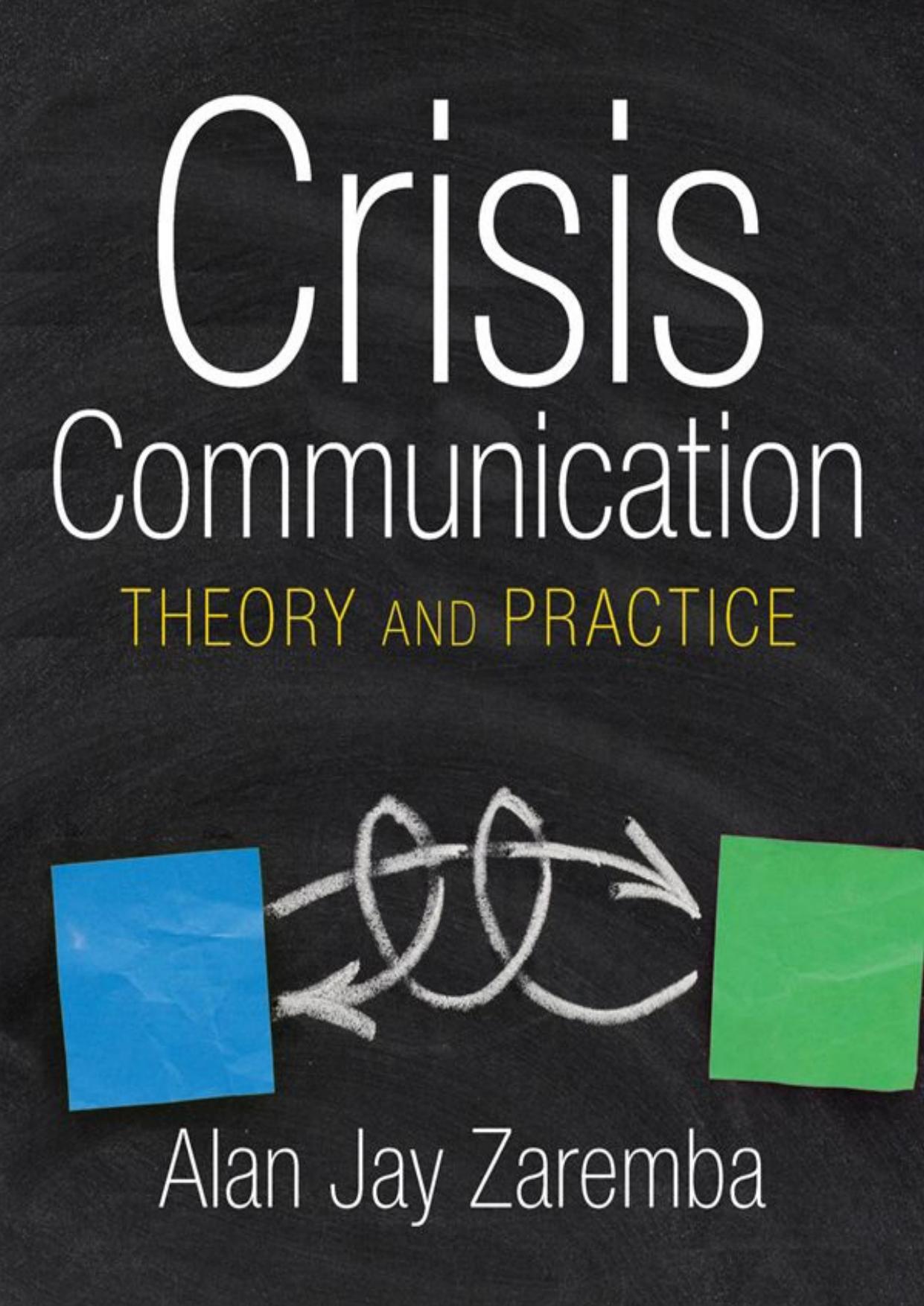Crisis Communication Theory and Practice 1st edition by Alan Jay Zaremba ISBN 1317473620 9781317473626
$70.00 Original price was: $70.00.$35.00Current price is: $35.00.
Instant download Crisis Communication Theory and Practice by Alan Jay Zaremba after payment
Crisis Communication Theory and Practice 1st edition by Alan Jay Zaremba – Ebook PDF Instant Download/Delivery: 1317473620 , 9781317473626
Full download Crisis Communication Theory and Practice 1st edition after payment

Product details:
ISBN 10: 1317473620
ISBN 13: 9781317473626
Author: Alan Jay Zaremba
Crises happen. When they do, organizations must learn to effectively communicate with their internal and external stakeholders, as well as the public, in order to salvage their reputation and achieve long-term positive effects. Ineffective communication during times of crisis can indelibly stain an organization’s reputation in the eyes of both the public and the members of the organization. The subject of crisis communication has evolved from a public relations paradigm of reactive image control to an examination of both internal and external communication, which requires proactive as well as reactive planning. There are many challenges in this text, for crisis communication involves more than case analysis; students must examine theories and then apply these principles. This text prepares students by: Providing a theoretical framework for understanding crisis communication Examining the recommendations of academics and practitioners Reviewing cases that required efficient communication during crises Describing the steps and stages for crisis communication planning Crisis Communication is a highly readable blend of theory and practice that provides students with a solid foundation for effective crisis communication.
Crisis Communication Theory and Practice 1st Table of contents:
1. Foundations for Crisis Communication
Chapter in a Nutshell
Sweet Sixteen
Practice and Simulations
Apply the Principles
Foundational Planks
Book Structure and Features
Chapter Features
Point/Counterpoint
Summary: A Toolbox
Practitioner Perspective: Ed Klotzbier
Exercises and Discussion Questions
Notes
2. Defining Crisis Communication
Chapter in a Nutshell
Case 2.1: Lab Shopping
Questions for Analysis
Defining Crisis Communication
Apply the Principles
Types of Crises
What Do Crisis Communications Do?
Myths About Crisis Communication
Apply the Principles
Key Crisis Communication Terms
Apply the Principles: Test Yourself
Crisis Communication and Organizational Communication
Apply the Principles
Point/Counterpoint
Summary: A Toolbox
Practitioner Perspective: Caroline Sapriel
Exercises and Discussion Questions
Notes
3. Organizational Theory and Crisis Communication
Chapter in a Nutshell
Case 3.1: A New Superstar
Questions for Analysis
Practical Theory
Systems Theory
Cultural Theory
Apply the Principles
Classical Theory
Apply the Principles
Human Resources Theory
Apply the Principles
Chaos Theory
Critical Theory
Apply the Principles
Communication Theory
Point/Counterpoint
Summary: A Toolbox
Exercises and Discussion Questions
Practitioner Perspective: Julie Hall
Notes
4. Planning for Crises
Chapter in a Nutshell
Case 4.1: There Must Be Some Mistake
Introduction — Time to Fix the Roof
Foundations: Avoiding Denial; Ethos and Legitimacy
Proactive Planning: Communication Infrastructure
Proactive Planning: Apply Stakeholder Theory
Apply the Principles: Stakeholder and Inoculation Theory
Globalization and Ethnocentrism
Step-by-Step Crisis Planning
Apply the Principles
Apply the Principles
Point/Counterpoint
Summary: A Toolbox
Practitioner Perspective: Alan Barocas
Exercises and Discussion Questions
Notes
5. Responding to Crises
Chapter in a Nutshell
Case 5.1: “What Would You Expect the Company to Do?”
Questions for Analysis
Introduction
Image Restoration Theory
Image Restoration Approaches
Apply the Principles
What Are the Best Approaches?
Recurring Counsel for Responding During Crises
Why Do Crisis Communication Responses Fail?
Point/Counterpoint
Summary: A Toolbox
Exercises and Discussion Questions
Case for Analysis
Notes
6. Ethical Issues in Crisis Communication
Chapter in a Nutshell
Case 6.1: Jelly Beans
Questions for Analysis
Why Do Ethical Decisions Affect Crisis Communication?
Apply the Principles
The Normalization of Deviance
Transparency, Ambiguity, and Crisis Communication
Significant Choice
Ethics of Scientific Argument
Apply the Principles
Ethical Behavior and Legal Decision Making
Identifying Fallacies
Apply the Principles
Point/Counterpoint
Summary: A Toolbox
Exercises and Discussion Questions
Practitioner Perspective: Sue Phillips
Notes
7. Crisis Communication Teams
Chapter in a Nutshell
Case 7.1: Feelings of Betrayal and Anger
Questions for Analysis
Introduction
Values of Meetings
Primary and Secondary Conflict
Nonsummativity and Multiple Causation
Agendas and Process
Apply the Principles
Interventions
Apply the Principles
Making Interventions Work
Examining Leadership Styles
Point/Counterpoint
Summary: A Toolbox
Practitioner Perspective: Joe Lukas
Exercises and Discussion Questions
Notes
8. Training the Spokesperson
Chapter in a Nutshell
Case 8.1: Meeting the Press
Questions for Analysis
Introduction
Misconceptions Regarding Speaking Skill
Communication Noise
A Game Conceptualization
Reducing Anxiety
Audience Analysis
Apply the Principles
Selecting an Appropriate Speaking Style
Structuring the Message
Apply the Principles
Apply the Principles
Elements of Delivery
Apply the Principles
Point/Counterpoint
Summary: A Toolbox
Practitioner Perspective: Steve Frankel
Exercises and Discussion Questions
Notes
9. Where Do You Go from Here?
Chapter in a Nutshell
Case 9.1: Disaster in Bhopal
Questions for Analysis
Introduction
Risk Communication
Values of Crisis Communication?
Leadership and Crisis
Apply the Principles
Point/Counterpoint
Summary: A Toolbox
Exercises and Discussion Questions
Notes
Index
People also search for Crisis Communication Theory and Practice 1st:
understanding crisis communication theory and practice
crisis communication theory and practice pdf
what is crisis communication theory
crisis theory examples
risis communication definition
Tags: Alan Jay Zaremba, Crisis Communication, Theory and Practice


